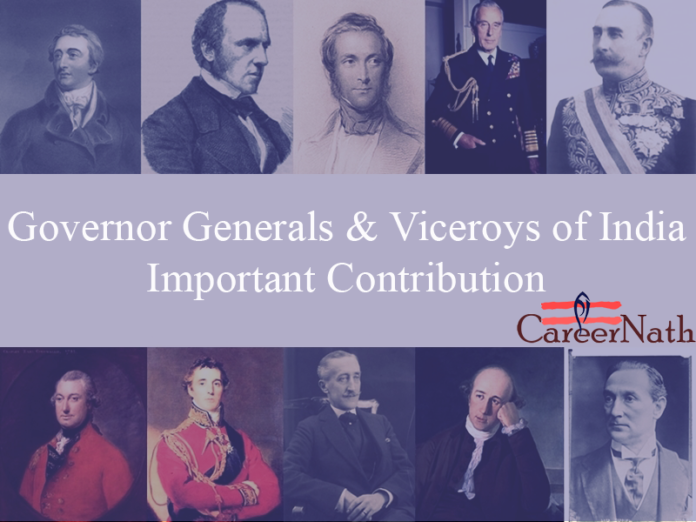Britishers came to India as a businessmen during the regime of Shah Jahan and after the demise of Aurangzeb, Britishers shifted their focus from mere traders to rulers. After, wining battle of Plassey & Buxar they established company rule in Bengal with first Governor General in 1777.
Viceroys & Governor Generals of India
Governor Generals of Bengal
Warren Hastings (1772-1785)
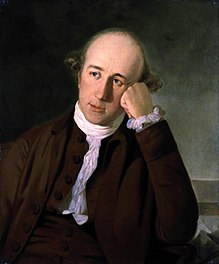 First Governor General of Bengal
First Governor General of Bengal- Brought the Dual Government of Bengal to an end by the Regulating Act, 1773.
- Deprived Zamindars of their judicial power and Civil and Criminal court were established.
- Maintenance of records was made compulsory.
- Great patron of oriental learning founded the Asiatic Society of Bengal with William Jones in 1784. He wrote introduction to the English translation of ‘The Gita’ by Charles Wilkins.
- Impeachment proceedings started against him when he returned on the charges of taking bridge. After a trial of 7 years, he was finally acquitted.
Lord Cornwallis (1786-1793)
 Did the Permanent Settlement of Bengal (also called Zamindary System)
Did the Permanent Settlement of Bengal (also called Zamindary System)- First person to codify laws. The code separated the revenue administration from the administration of Justice.
- Police Reforms: Each district was divided into 400 sq. miles and placed under a police superintendent.
- The civil service was brought into existence.
Sir John Shore (1793-1798)
Lord Wellesley (1798-1805)
-
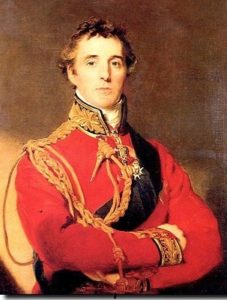
Adopted the police of Subsidiary Alliance- a system to keep the Indian rulers under control and to make the British the paramount power.
- The states that accepted this policy were the Nizam of Hyderabad, the ruler of Mysore, the Raja of Tanjore, the Nawab at Awadh, the Peshwa, the Bhonsle Raja of Berar, the Scindia, the Rajputs of Jodhpur, Jaipur, etc.
George Barlow (1805-1807)
Lord Minto 1 (1807-1813)
- Concluded the treaty of Amritsar with Maharaja Ranjit Singh (1809).
- Charter Act 1813 was passed
Lord Hastings (1813-1823)
Lord Amherst (1823-1828)
- Has reign is known for the first Anglo-Burmese War (1824-26) and mutiny of Barrackpur (1824).
After the death of Ranjit Singh in North, Tipu Sultan in South and suppressing Gorkhas & Marathas Britishers established themselves premier power in whole India and in 1828 first Governor General of India was appointed.
Governor Generals of India
Lord William Bentinck (1828-1835)
 Carried out the social reforms like Prohibition of Sati (1829) and Elimination of Thugs (1830)
Carried out the social reforms like Prohibition of Sati (1829) and Elimination of Thugs (1830)- Made English the medium of higher education in the country (after the recommendations of Macaulay).
- Suppressed female infanticide and child sacrifice.
- Charter Act 1833 was passed, made him the First Governor of India. Before him, the designation was Governor General of Bengal.
- Abolition of provincial courts of appeal and circuit, the power of the magistrate increased, an appointment of Indians as judges, replacement of Persian by vernaculars and Scott language, an introduction of the residuary system, Sardar Diwani Adalat at Allahabad; Codification of Laws.
Sir Charles Metcalfe (1835-1836)
- Abolished all restrictions on vernacular press (called Liberator of the Press).
Lord Auckland (1836-1842)
- The most important event of his reign was the first Afghan War, which proved to be a disaster for the English.
Lord Ellenborough (1842-1844)
- His period is known for the end of the first Afghan war, an annexation of Sindh to the British Empire (1843).
Lord Hardinge I (1844-1848)
The most important event of his featured his First Sikh War (1845-1846).
Lord Dalhousie (1848-1856)
- He was the youngest to hold the office of the Governor General. He is famous for the Doctrine of Lapse . The second Burmese war, 1852, took place because of Lord Dalhousie‘s desire to exclude all European power from Burma. The second Anglo-Sikh War and did Sikh power and Punjab was annexed.
- Artillery Headquarters moved from Calcutta to Meerut; Army headquarters shifted to Shimla; formation of Gurkha regiments.
 Opened the first Indian Railway in 1853 (From Bombay to Thane).
Opened the first Indian Railway in 1853 (From Bombay to Thane).- Laid out the telegraph lines in 1853 (First was From Calcutta to Agra).
- Introduced the Doctrine of Lapse and captured Satara (1848), Jaipur and Sambhalpur (1849), Udaipur (1852), Jhansi (1853) and Nagpur (1854).
- Established the postal system on the modern lines through the length and breadth of the country, which mode communication easier.
- Started the Public Works Department. Many bridges were constructed and work on Grand Trunk Road was started. The harbors of Karachi, Bombay and Calcutta were also developed.
- Made Shimla the summer capital.
- Started Engineering College at Roorkee.
- Encouraged science, forestry, commerce, mineralogy and industry.
- In 1854, ‘Wood’s Dispatch’ was passed, which provided for the properly articulated system of education from the primary school to the university.
- Due to Ishwar Chandra Vidyasagar’s efforts, remarriage of window was legalized by Window Remarriage Act, 1856.
Lord Canning (1856-1858)
- Annexation of Avadh; enactment of Hindu Widow Remarriage Bill, 1857; establishment of universities at Calcutta, Madras, and Bombay; the revolt of 1857 who were some of the important events during his post of Governor General.
- He was the last Governor General of India.
After the revolt of 1857 the British crown held responsible British East India company for the mutiny but it also, appreciated the work of the company. But, it transfer full control of British India to British Monarch Crown in London and new post was established as head of India i.e The Viceroy of India.
Viceroys of India
Lord Canning (1858-1862)
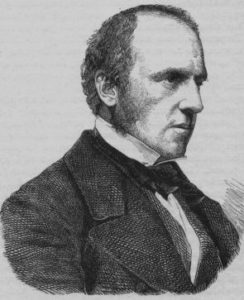 He was the first Viceroy of British India
He was the first Viceroy of British India- On November 1858, the rule passed on to the crown.
- Withdrew Doctrine of Lapse.
- The University of Calcutta, Bombay and Madras were established in 1857.
- Indian Councils Act was passed in 1861.
- In April 1859 he received the thanks of both Houses of Parliament for his great services during the rebellion. He was also made an extra civil grand cross of the Order of the Bath, and in May of the same year he was raised to the dignity of an Earl, as Earl Canning.
- Canning and his wife, Charlotte, had desired to produce a photographic survey of Indian people, primarily for their own edification which was later classified as govt of India project and launched in year 1968 as ” The people of India”.
Lord Elgin (1862-1863)
Lord Lawrence (1864-1869)
- Telegraphic communication was opened with Europe.
- High court was established at Calcutta, Bombay and Madras in 1865.
- Expanded canal work and railways.
- Created the Indian Forest Department.
Lord Mayo (1869-1872)
 Started the process of financial decentralization in India.
Started the process of financial decentralization in India.- Established the Rajkot College at Kathiawar and Mayo College at Ajmer for the Indian Princes.
- For the first time in Indian history, a census was held in 1871.
- Organished the Statistical Survey of India.
- Was the only Viceroy to be murdered in office by a Pathan convict in the Andamans in 1872.
- He started the process of decentralization of finance. In foreign affairs, he followed the policy of non-intervention.
Lord Northbrook (1872-1876)
Lord Lytton (1876-1880)
 Known as the Viceroy of reverse characters.
Known as the Viceroy of reverse characters.- Organished the Grand ‘Delhi Durbar’ in 1877 to decorate Queen Victoria with the title of ‘Kaiser-I-Hind’.
- Arms Act (1878) made it mandatory for Indians to acquire license for arms.
- The monsoons of 1876 had failed to bring their due supply of rain, and the season of 1877 was little better. This long-continued drought stretched from the Deccan to Cape Comorin, and subsequently invaded northern India, causing a famine more wide-spread than any previously known in Indian history.
- Passed the infamous Vernacular Press Act (1878).
- Lucile was a verse novel written by Lord Lytton, published in 1860.
Lord Ripon (1880-1884)
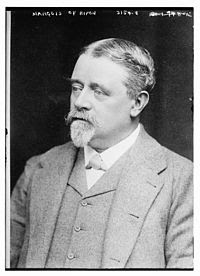 Liberal person, who sympathized with Indians.
Liberal person, who sympathized with Indians.- Repealed the Vernacular Press Act (1882).
- He also, reduced the Income Tax on Indians.
- Took steps to improve primary and secondary education (on William Hunter Commission’s recommendations).
- The 1 Factory Act (1881), aimed at prohibiting child labour.
- Passed the Bill (1883) which enabled Indian district magistrates to try European Criminals. But this was withdrawn later.
- In 1882, Lord Ripon organized the Hunter Commission under William Wilson Hunter. William Wilson Hunter was the statistician, a compiler and a member of the Indian Civil Service, who later also became Vice President of Royal Asiatic Society.
- A Resolution in 1882 set off the institution of local self-government in India.
Lord Dufferin (1884-1888)
- Indian National Congress was formed during his tenure.
- During his tenure, the Third Burmese war led to annexation of whole of Burma and Burmese ruler was exiled to India.
Lord Lansdowne (1888-1894)
 2nd Factory Act (1891) granted a weekly holiday and stipulated working hours for women and children, although it failed to address concerns such as work hour for men.
2nd Factory Act (1891) granted a weekly holiday and stipulated working hours for women and children, although it failed to address concerns such as work hour for men.- Categorization of Civil Service into Imperial, Provincial and Subordinate.
- Indian Council Act 1892 was passed.
- Appointment of Durand Commission to define the line between British India and Afghanistan.
- Most of his time and energy of Lansdowne was dedicated in solving the border problem. The Durand Line agreement was signed whereby Afghanistan would receive a mission led by Sir Mortima Durand.
- In 1893 a royal commission was issued to inquire into the results of using opium in India, and the possibility of prohibiting it.
Lord Elgin II (1894-1899)
- Great famine of 1896-1897. Lyall Commission was appointed.
Lord Curzon (1899-1905)
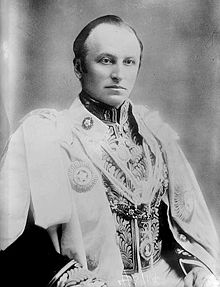 Passed the Indian University Act 1904 in which official control over the Universities was increased.
Passed the Indian University Act 1904 in which official control over the Universities was increased.- Partitioned Bengal (October 16, 1905) into two provinces – Bengal (proper), East Bengal and Assam.
- Appointed a Police Commission under Sir Andrew Frazer to enquire into the police administration of every province.
- The risings of the frontier tribes in 1897-98 led him to create the North Western Frontier Province (NWEP).
- Passed the Ancient Monuments Protection Act (1904), to restore India’s culture heritage. Thus the Archaeological Survey of India was established.
- Passed the Indian Coinage and Paper Currency Act (1899) and put India an a gold standard.
- Extended railways to a great extent.
- Punjab Land Alienation Act 1900: placed a 15 year limitation on all land purchases and mortgages. This act provided that the no non-peasant could buy lands from the peasants; and no one could attach the land for non-payment of debts.
- To bring the universities under control, Lord Curzon appointed Raleigh Commission under Sir Thomas Raleigh. The Raleigh Commission had only one Indian member,Syed Hussain Belgrami. When Hindus protested about this, Justice Guru Das Banerjee was called from the High Court of Calcutta and made a member.
- A major Earthquake shook the parts of Northern India like Punjab & Himachal Pradesh killing thousand of people and destroying several buildings and monuments
Lord Minto (1905-1910)
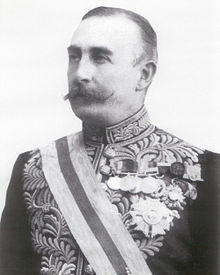 There was great political unrest in India. Various acts were passed to curb the revolutionary activities. Extremists like Lala Lajpat Rai and Ajit Singh (in May, 1907) and Bal Gangadhar Tilak (in July, 1908) were sent Mandalay jail in Burma.
There was great political unrest in India. Various acts were passed to curb the revolutionary activities. Extremists like Lala Lajpat Rai and Ajit Singh (in May, 1907) and Bal Gangadhar Tilak (in July, 1908) were sent Mandalay jail in Burma.- The Calcutta Session, Surat Split occurred during this session.
- The Indian Councils Act expanded the legislative councils at the both the levels viz. central as well as provincial but it also introduced separate and discriminatory electorate. This was for the first time that, electorate for returning to the representatives to the councils was decided on the basis of class & community. The congress denounced it in Lahore session in 1909.
Lord Hardinge (1910-1916)
- Held a durbar in December, 1911 to celebrate the coronation of King George V.
- Partition of Bengal was cancelled (1911) t, capital shifted from Calcutta to Delhi (1911).
- A bomb was thrown at him, but he escaped unhurt (Dec.13, 1919).
- Gandhiji came back to India from South Africa (1915).
- Annie Besant announced the Home Rule Movement.
Lord Chelmsford (1916-1921)
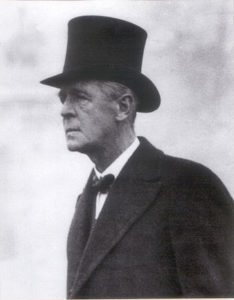 August Declaration of 1917, whereby control over the Indian Government would be gradually transferred to the Indian people.
August Declaration of 1917, whereby control over the Indian Government would be gradually transferred to the Indian people.- The Government of India Act in 1919 (Montague-Chelmsford) was passed.
- Rowlatt Act of 1919, Jallianwala Bagh Massacre (April13, 1919).
- Non-Cooperation Movement.
- An Indian Sir S.P. Sinha was appointed the Governor of Bengal.
- On the basis of recommendations of this committee, a new law titled “Anarchical and Revolutionary Crimes Act of 1919” famously called “Rowlatt Act” was passed. This law authorized the government to imprison any person suspected of terrorism for a period of maximum 2 years without trial. It provided a special cell of 3 high court judges for speedy trial of terrorism offenses, but there was no court of appeal above that panel. Further, it also provided to accept some evidences which were hitherto unacceptable in Indian Evidence Act.
- A Women’s University was founded at Poona in 1916.
- Saddler Commission was appointed in 1917 to envisage new educational policy.
- Khilafat Movement was organized by Indian Muslims to protest against the shabby treatment meted out to Turkey by the Allies.
- The political organizations such as Satyagraha Sabha, Home Rule League, Muslim League and others started agitating against the Rowlatt act. Gandhi organized a mass protest and all India strike in April, 1919.
Lord Reading (1921-1926)
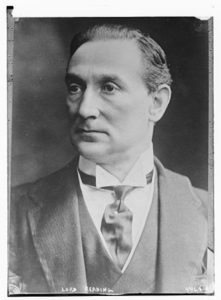 Rowlatt act was repealed along with the Press act of 1910.
Rowlatt act was repealed along with the Press act of 1910.- Suppressed non-cooperation movement.
- Prince of walse visited India in November, 1921.
- Moplah rebellion (1921) took place in Kerala.
- Ahmadabad session of 1921.
- Formation of Swaraj Party originally launched as Congress-Khilafat Swaraj Party by congress leaders Moti Lal Nehru, CR Das, NC Kelkar, GS Gharpade, S Srinivas, who had linked up with Khilafat leaders such as Huseyn Shaheed Suhrawardy and some other leaders such as Subhash Chandra Bose & Vithalbhai Patel out of frustration with the Gandhi’s decision to withdraw NCM.
- Vishwabharti University started functioning in 1922.
- Communal riots of 1923-25 in Multan, Amritsar, Delhi, etc.
- Swami Shraddhanand, a great nationalist and a leader of the Arya Samajists, was murdered in communal orgy.
- The Suddhi movement was initiated by Dayananda with the intentions to unify India and in it; Non-Hindus and untouchables were converted to Hinduism. So, the movement led to some political implications, and indirectly led to growth of communalism.
- Kakori Train Conspiracy (1925) was a work of members of Hindustan Republican Association (HRA). They wanted to carry out a political dacoity to secure money from Government. The loot was done successfully but the plot was soon unearthed.
Lord Irwin (1926-1931)
- Simon Commission visited India in 1929.
- Congress passed the Indian Resolution in 1929.
- Dandi March (March5, 1930).
- First Round Table Conference held in England in 1930.
- Gandhi-Irwin Pact (March5, 1931) was signed and Civil Disobedience Movement was withdrawn.
- Martyrdom of Jatin Das after 64 days hunger strike (1929).
- Motilal Nehru Report 1928 for the formation of draft constitution for India
- Jinnah and others called a Muslim All Parties conference in Delhi. In that conference, Jinnah formulated the 14 points to safeguard the interests of the Muslims and made it crystal clear that no constitution, by whomsoever proposed or devised, would be acceptable to the Muslims, unless it conformed with those demands.
Lord Willingdon (1931-1936)
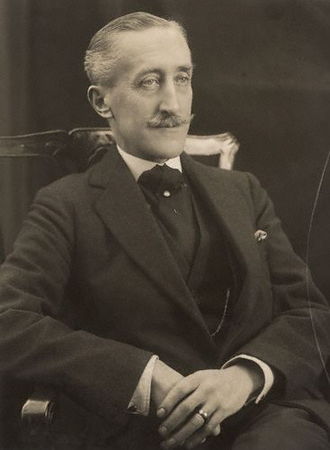 Second Round Table Conference in London in 1931.
Second Round Table Conference in London in 1931.- On his return Gandhiji was again arrested and Civil Disobedience Movement was resumed in Jan., 1932.
- Communal Award (August16, 1932) assigned seats to different religious communities. Gandhiji went on an epic fast in protest against this division.
- Third Round Table Conference in 1932.
- Poona Pact was signed.
- Government of India Act (1935) was passed.
- The last major event during the times of Lord Willingdon was the catastrophic 8.4 scale Earthquake in Bihar. This earthquake completely destroyed the Munger and Muzaffarpur area. Its epicenter was in Nepal and almost whole of the Bihar state got affected. Life of some 40,000 people was lost.
Lord Linlithgow (1936-1944)
 Government of India Act enforced in the provinces. Congress ministries formed in 8 out of 11 provinces. They remained in power for about 2 years till October 1939, when they gave offices on the issue of India having been dragged into the 2 World War. The Muslim League observed the day as ‘Deliverance Day’ (22December).
Government of India Act enforced in the provinces. Congress ministries formed in 8 out of 11 provinces. They remained in power for about 2 years till October 1939, when they gave offices on the issue of India having been dragged into the 2 World War. The Muslim League observed the day as ‘Deliverance Day’ (22December).- Churchill became the British PM in May, 1940. He declared that the Atlantic Charter (issued jointly by the UK and US, stating to give sovereign rights to those who have been forcibly deprived of them) does not apply to India.
- It has longest serving Viceroy of India period 8 years.
- On September 3, 1939, the Second World War broke out and on the same day Lord Linlithgow declared India as belligerent and at war. While Subhash Chandra Bose advocated a campaign of mass civil disobedience to protest against Viceroy Lord Linlithgow’s decision to declare war on India’s behalf without consulting the Congress leadership; it was Congress idea to support the British on condition that India should be declared an independent nation immediately after the war and a responsible government must be placed at the centre.
- In Ramgarh Session of March 1940, the congress passed a resolution in which it offered Government support in war if a provisional National Government is set up at centre. The Government responded in sort of a proposal by Lord Linlithgow, which is called August Offer. In this offer, the demand to set up a provisional National Government was turned down but it proposed that immediately after the war a Constitution Making Body would be appointed. This was rejected by Congress.
- In 1942, the Japanese forces had advanced towards west and occupied Andaman Islands. There was a threat of Japanese invasion on Indian mainland.Further, there was a pressure from the American President F. Roosevelt and Chinese premier Chiang Kai-Shek to concede the real political power to the people of India. The public sentiment in England was also in favour of reconciliation in India and Cripps Mission was introduced in 1942
- Quit India Movement plan (May16, 1942).
Lord Wavell (1944-1947)
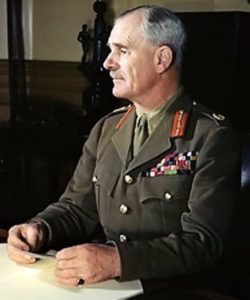 Arranged the Shimla Conference on June25, 1945 with Indian National Congress and Muslim League, failed.
Arranged the Shimla Conference on June25, 1945 with Indian National Congress and Muslim League, failed.- Elections to the constituent assembly were held and an Interim Government was appointed under Nehru.
- He introduced the Wavell Plan for the partition of India.
- First meeting of the constituent assembly was held on December 9, 1946.
- The Prime Minister of Britain Clement Atlee declared on February 20, 1947 in the House of Commons that the British would quit India after transferring power into the responsible hand not later than June 1948. The idea was that the Indians should settle their issues before that. He also announced the appointment of Lord Mountbatten as Viceroy in place of Lord Wavell.
Lord Mountbatten (March 1947-August 1947)
 Last viceroy of British India and the first Governor General of free India.
Last viceroy of British India and the first Governor General of free India.- Partition of India decided by the June 3 plan.
- Indian Independence Act passed by the British Parliament on July 4, 1947, by which India became independence on August 15, 1947.
- Retired in June 1948 and was succeeded by C. Rajgopalachari.
C. Rajgopalachari (1947-1950)
- The first and last Indian Governor General of Independent India.


